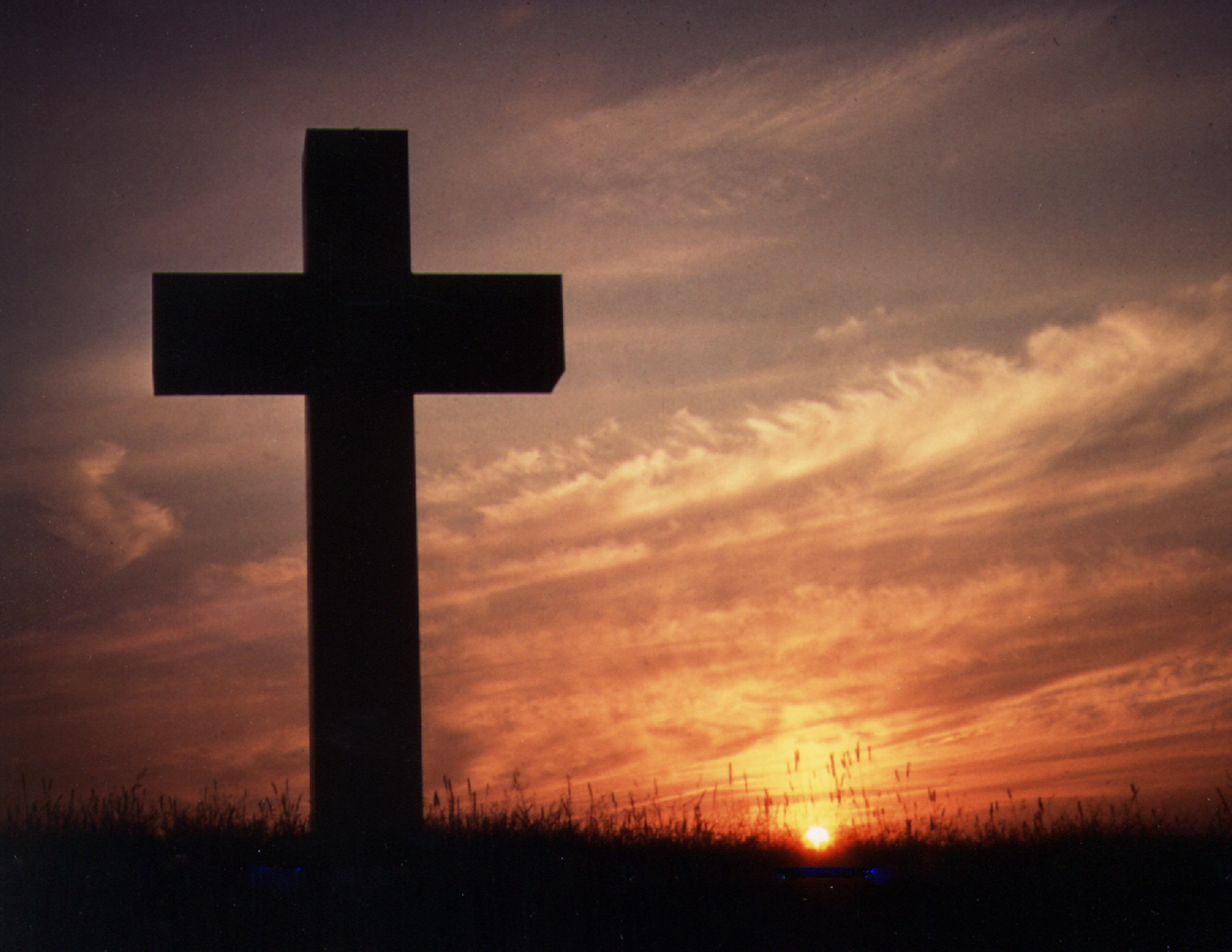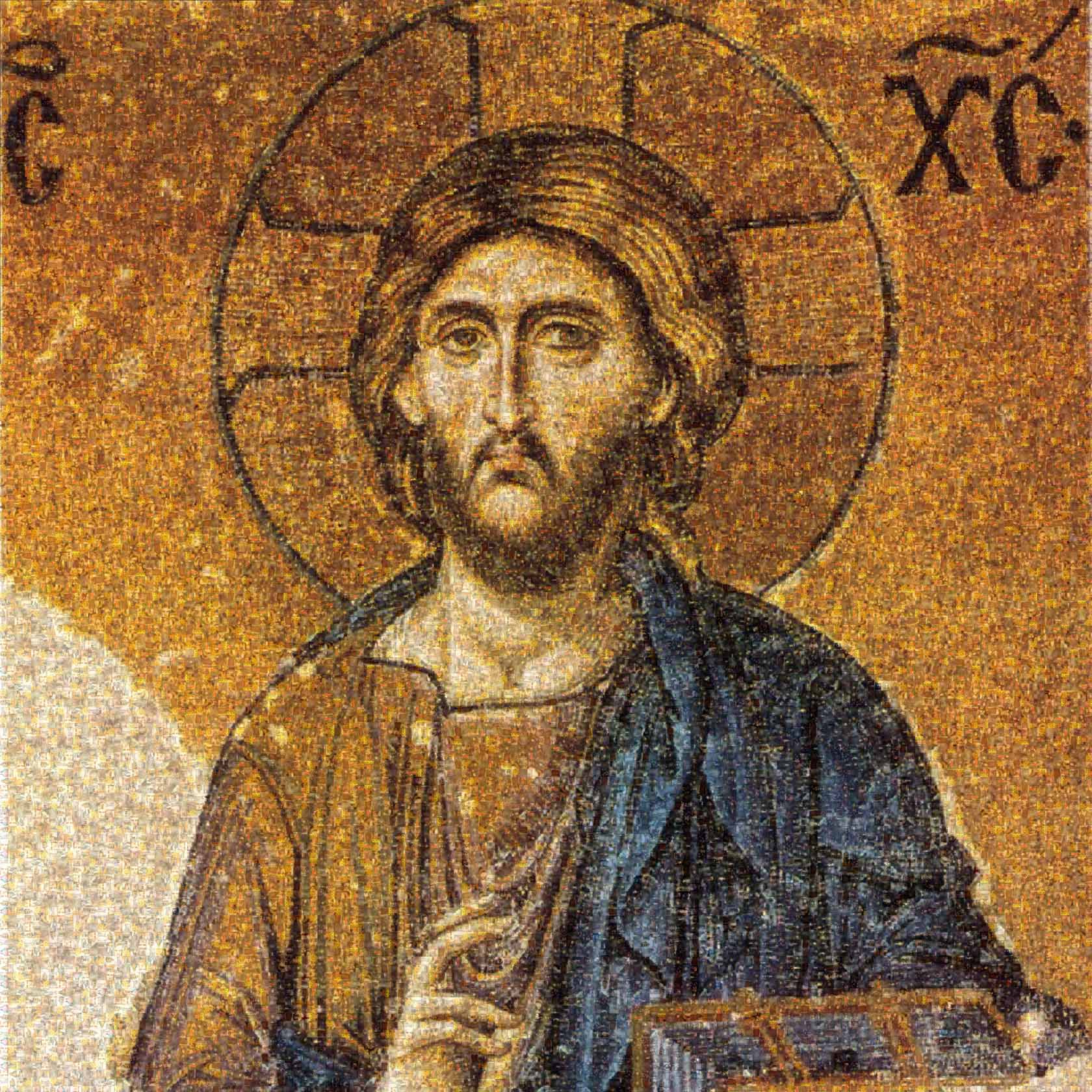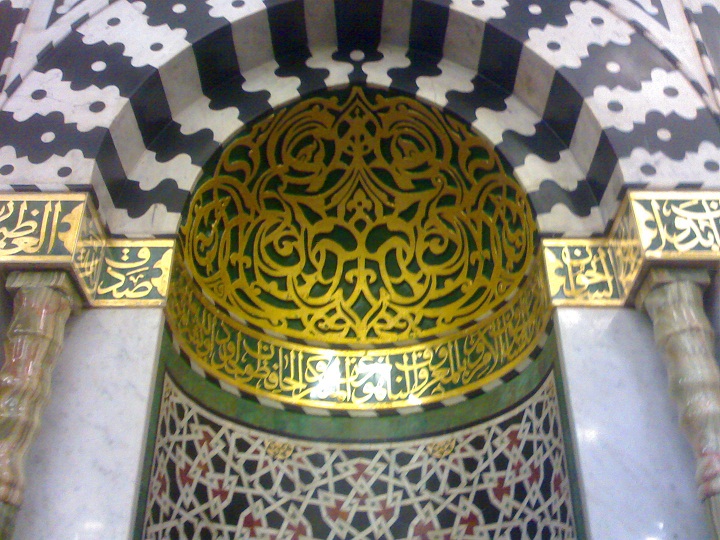Station 2 – Religion in the Cultural Landscape
Christianity

The holy cross of Christianity.
The Christian cross is a symbol used by Christians everywhere to signify their faith. The cross is significant because Jesus of Nazareth, the religion’s founder, was crucified (killed) on a cross and since his resurrection was significantly tied to the cross, Christians regard the cross as a symbol of their religion.

Christ Pantocrator, a Byzantine icon.
Eastern Orthodoxy is a branch of Christianity, and they believe that icons, or holy paintings of Jesus and other religious symbols, are an important aspect of their religion. Icons are significant because they represent holy figures that one should aspire to be with, and allow adherents to feel as if that holy figure was in front of them.

A Lutheran church in Slovakia.
Churches are the holy places of worship in Christianity and are where Christians gather on Sundays to listen to sermon by their church’s pastor or priest. This is extremely important to Christians because Christians rely on visits to church to learn more about their religion and to socialize with other fellow Christians.
Islam
The Kaaba in the Masjid al-Haram.
The Kaaba is a shrine that is the most sacred place in Islam, and it is significant because one of the main requirements of Islam is to make a pilgrimage to Mecca and visit the Kaaba. Whenever Muslims pray five times a day, another main requirement of Islam, they also must face the Kaaba in Mecca. It is considered a symbol of Islam.

The Dome of the Rock in Jerusalem.
The Dome of the Rock is a shrine of Islam where Muhammad was believed to have been buried. Muhammad was the prophet that founded Islam, therefore causing the Dome of the Rock to be a very significant place for Muslims. In addition, its outside architecture is representative of the architecture commonly seen in Islamic culture, with an onion dome and geometric tiles.

A mihrab pointing to the direction of the qibla.
A mihrab is an arch-like structure used to indicate the qibla, the direction of prayer. Since Muslims must pray to the direction of Mecca, an indicator of what direction prayer must be done is important in a mosque.
Buddhism

The Lingshan Grand Buddha, in Wuxi, Jiangsu, China. (Nearby Shanghai)
The Lingshan Grand Buddha is one of the largest structures depicting Siddhartha Gautama. To Buddhists in China, visiting the base of the Lingshan Grand Buddha and touching the feet is considered good luck. Mahayana Buddhists consider prayer to any buddhas to be considered good luck, but it would be especially good luck to pray to the Lingshan Grand Buddha.

A descendent of the Bodhi tree.
The Bodhi tree is where Siddhartha Gautama the Buddha was said to have become enlightened. Even though the original is no longer alive, its children are admired around the world by Buddhists because they are a symbol of enlightenment, an important aspect of becoming a bodhisattva and attaining nirvana.

A Diamond Sutra in Chinese.
The Diamond Sutra is a Mahayana sutra text that promotes detachment from the material world. These principles are important to Buddhists, especially Mahayana Buddhists, and therefore this book is considered a very important text for Buddhists. Do note that unlike Christianity, this is not holy nor the definitive guide to nirvana.
Judaism

A menorah similar to the one in the Temple.
A menorah is a candle holder with each branch representing every day that the candle was lit in the temple. Originally, enough oil was available for only one day, but the oil managed to last for eight days, a miracle that is reflected every Hanukkah, which itself is a holy holiday in Judaism. Since the Talmud does not allow seven branched menorahs outside of the Temple, most menorahs have eight branches with the middle stem being the ninth branch.

An aerial view of Temple Mount.
Temple Mount is the holiest site in Judaism because the god of Judaism, Yahweh, chose the Divine Presence (Shekhinah) to rest here. The complex is located in Jerusalem and shares many of its holy sites with Islam, sometimes becoming the center of religious conflict between these two faiths.
The Star of David is the symbol used by present-day Jews to represent their faith. Because it has been used historically to represent the Jewish faith and the Zionist movement made the Star of David their religious symbol and now part of the Israeli flag, the Star of David is extremely important to Judaism.
Hinduism

Varanasi city on the banks of the Ganges River.
The Ganges River is a river that flows through northern India, the origins of the Hindu religion. As a result, this river is considered holy by Hindus and is visited by pilgrims seeking to purify themselves.

A typical Kalyani tank.
Kalyani tanks are located in Hindu temples and are important because they are used by Hindus to cleanse themselves before prayer. Some of these tanks are said to have the ability to cure diseases. In addition, during the Hindu holiday of Ganesha Charturthi, idols of Ganesha are immersed in Kalyani tanks and are an important part of this Hindu holiday.

The garbhagriha in the Chennekasava temple.
A garbhagriha is the innermost chamber of a Hindu temple and is considered the holiest and most significant part of the Hindu temple. It usually houses the more significant god of the temple, like Vishnu.
Shintoism
The Ise Shrine is home to the primary deity of Shintoism, Amateratsu omikami.
The Ise Shrine is a Shinto shrine believed to be the home of the primary deity of the Shinto religion, Amateratsu omikami. Because it is so holy, access is limited from the general public.
Offerings and tamaguchi at a Shinto shrine.
Offerings are part of the Shinto religion and are meant to be for the kami spirits of Shintoism. These offerings are called harae and are significant because they are part of ritual purification of the person visiting the Shinto shrine.
A torii is a distinctly-shaped gate at a Shinto shrine. It is significant because it represents the crossing over from profane to holy. Westerners and Japanese alike will use the torii to represent Shintoism, especially its shrines.